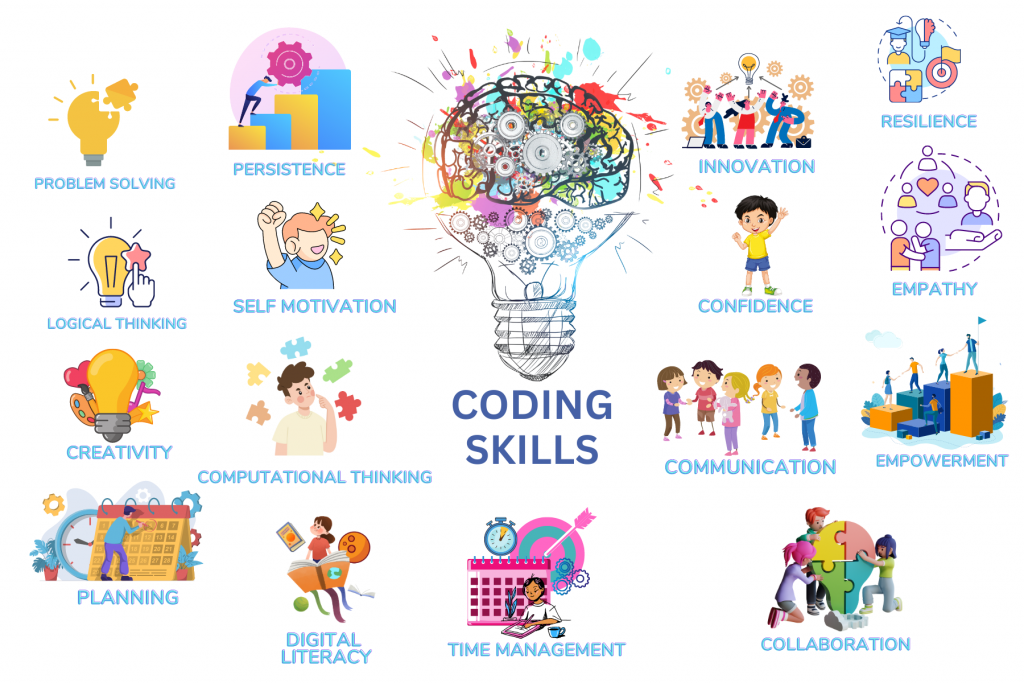Integrating coding and MakerSpaces into education has become increasingly necessary in today’s quickly changing technology landscape. These novel methodologies not only provide students with valuable technical expertise but also cultivate creativity, analytical reasoning, cooperation, and problem-solving proficiencies. Now, let’s explore the importance of coding and MakerSpaces in education, as well as the misunderstandings that exist around these subjects. I am going to address the questions from our weekly plan – 
The advantages for students
Introducing coding and MakerSpaces to students provides a wide range of advantages. First and foremost, it fosters computational thinking, allowing students to analyze intricate problems by breaking them down into smaller components and devising systematic solutions. This talent is valuable in a wide range of fields and practical situations.
Moreover, participating in coding and MakerSpaces fosters creativity by offering a forum for students to investigate and articulate their ideas through practical projects. It promotes experimentation, creativity, and the cultivation of a growth mentality, where setbacks are seen as chances for learning and progress.
Furthermore, these programmes foster teamwork and enhance communication skills as students collaborate in teams, exchanging ideas, resolving obstacles, and collaboratively completing their projects. This cooperative setting replicates real-life situations, equipping students for future vocational pursuits.
Ensuring inclusivity and accessibility
While engaging in coding and utilizing MakerSpaces can provide a multitude of advantages, it is crucial to priorities inclusion and accessibility for all students. Although the majority of students might greatly gain from these experiences, a subset may encounter difficulties as a result of circumstances such as learning disabilities, inadequate prior exposure, or restricted access to resources.
In order to tackle these difficulties, educators can implement differentiated instruction strategies, which involve offering a range of approaches and support systems that are specifically designed to meet the unique needs of each student. Moreover, cultivating a nurturing and all-encompassing educational setting promotes students’ willingness to confront difficulties, seek help when necessary, and commemorate one another’s accomplishments.
Overcoming Challenges
Although coding and MakerSpaces offer evident advantages, certain educators may encounter challenges when integrating them into their educational environments. Typical obstacles encompass insufficient financing for tools and equipment, inadequate professional development opportunities for teachers, and curricular limitations.
In order to surmount these challenges, educational institutions can actively pursue external financing opportunities, establish partnerships with community organizations, and offer continuous professional development for teachers. Incorporating coding and MakerSpaces into current curricula and utilizing interdisciplinary links can optimize learning results while also resolving time limitations and curriculum objectives.
The idea that coding and MakerSpaces should exclusively be taught by individuals with technical expertise is a widely held misunderstanding. Proficiency in technology is advantageous, but proficient teaching in these fields necessitates a varied range of abilities, such as pedagogical experience, creative thinking, flexibility, and an enthusiasm for motivating student learning.
Teaching by “Techies”
Teachers from diverse fields can participate in professional development, work together with technology specialists, and utilize existing resources to successfully incorporate coding and MakerSpaces into their teaching methods. Prioritizing interdisciplinary collaboration and recognizing the importance of varied viewpoints enhances the educational experience and guarantees inclusivity for every student.
Ultimately, coding and MakerSpaces are crucial components of contemporary education, granting students with vital abilities and cultivating a climate of originality, cooperation, and creativity. Through early resolution of obstacles, the active promotion of inclusiveness, and the use of a wide range of specialized knowledge, educators may fully harness the power of coding and MakerSpaces to equip students with the necessary skills for triumph in a constantly evolving world.
Jashan, your blog post provides a clear and comprehensive overview of the benefits, challenges, and strategies related to integrating coding and MakerSpaces in education. Your explanations are easy to understand and effectively convey the importance of these concepts in modern classrooms. You also offer practical solutions for addressing challenges, such as implementing differentiated instruction and seeking external funding. Your emphasis on collaboration and inclusivity demonstrates a deep understanding of the educational landscape. Overall, your post serves as a valuable resource for educators looking to enhance their teaching practices and create dynamic learning environments. Keep up the excellent work in advocating for innovative and accessible education for all students!